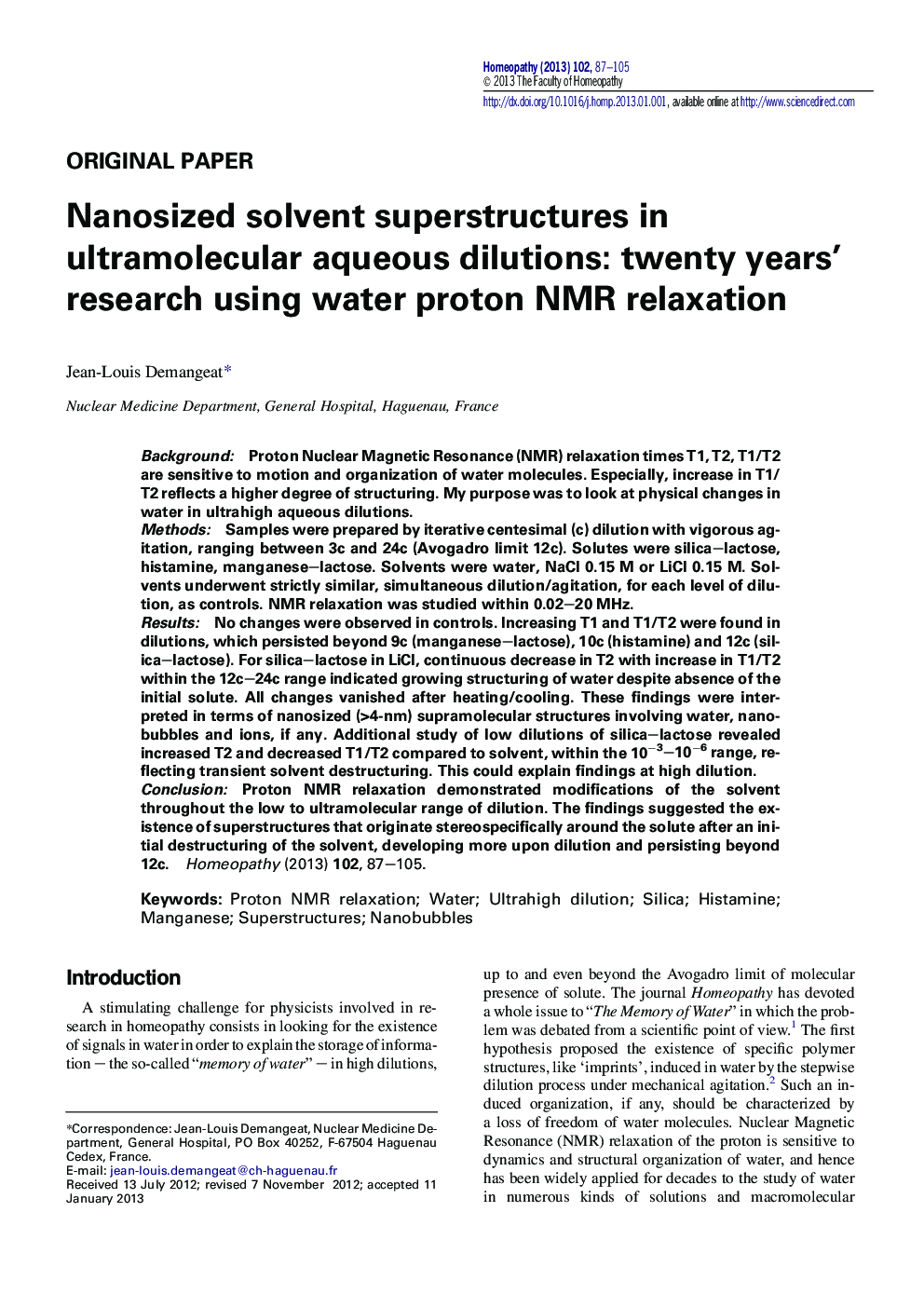| Article ID | Journal | Published Year | Pages | File Type |
|---|---|---|---|---|
| 2629990 | Homeopathy | 2013 | 19 Pages |
BackgroundProton Nuclear Magnetic Resonance (NMR) relaxation times T1, T2, T1/T2 are sensitive to motion and organization of water molecules. Especially, increase in T1/T2 reflects a higher degree of structuring. My purpose was to look at physical changes in water in ultrahigh aqueous dilutions.MethodsSamples were prepared by iterative centesimal (c) dilution with vigorous agitation, ranging between 3c and 24c (Avogadro limit 12c). Solutes were silica–lactose, histamine, manganese–lactose. Solvents were water, NaCl 0.15 M or LiCl 0.15 M. Solvents underwent strictly similar, simultaneous dilution/agitation, for each level of dilution, as controls. NMR relaxation was studied within 0.02–20 MHz.ResultsNo changes were observed in controls. Increasing T1 and T1/T2 were found in dilutions, which persisted beyond 9c (manganese–lactose), 10c (histamine) and 12c (silica–lactose). For silica–lactose in LiCl, continuous decrease in T2 with increase in T1/T2 within the 12c–24c range indicated growing structuring of water despite absence of the initial solute. All changes vanished after heating/cooling. These findings were interpreted in terms of nanosized (>4-nm) supramolecular structures involving water, nanobubbles and ions, if any. Additional study of low dilutions of silica–lactose revealed increased T2 and decreased T1/T2 compared to solvent, within the 10−3–10−6 range, reflecting transient solvent destructuring. This could explain findings at high dilution.ConclusionProton NMR relaxation demonstrated modifications of the solvent throughout the low to ultramolecular range of dilution. The findings suggested the existence of superstructures that originate stereospecifically around the solute after an initial destructuring of the solvent, developing more upon dilution and persisting beyond 12c.
